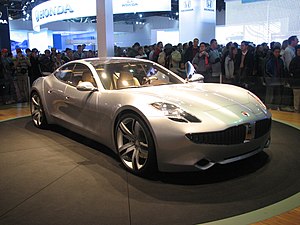Electric cars came on the scene a number of years ago. The idea of plugging your car into the outlet in your garage rather than having to look for a gas station is attractive. Also, depending on the price of electricity vs the price of gasoline, an electric car could save you money. However, the basic laws of physics get in the way.
On Friday, The Patriots Business Alliance posted an article about electric cars. The article discussed the physics and business aspect of the cars:
Does the move to electric vehicles result in a reduction in the total energy necessary to achieve the same result? Simple answer, no. In its simplest measure, it will take the same amount of energy to move “X” number of pounds from point A to point B if all the other variables are the same. Now, is there any evidence that how that energy is applied or utilized really makes a difference? Not as far as I have found.
So, for the vehicle type that the “green” energy advocates consider to be the best result, the plug-in hybrid, where does this energy come from? We will examine only the US model at this point. This is the US electrical supply in 2015 by generating source- Coal = 33%, Natural gas = 33%, Nuclear = 20%, Hydropower = 6%, other renewables = 7% including, Biomass = 1.6%, Geothermal = 0.4%, Solar = 0.6% and Wind = 4.7%, and last but least, Petroleum = 1%. From this information we have to see that the plug-in hybrid is first and foremost a coal, natural gas and nuclear powered vehicle. But that’s just part of the equation because this doesn’t take in to account the amount of energy that is lost through the transmission process. Most people don’t understand, or even consider, that the amount of energy that is fed in to the transmission grid is reduced by the amount of energy consumed in the transmission process before it reaches the point of use. But in evaluating the “greenness” of the plug-in hybrid this must be considered because it is part of the equation. Also, the plug-in hybrid still must have a supplemental internal combustion gasoline engine in case you need to go farther than you can go on a charge.
That is a whole lot more technical information than my brain can handle, but if I understand it correctly, the bottom line is that an electric car does not actually conserve energy.
The article further explains:
Now, let’s look at a practical example, the Chevy Cruze, a standard gasoline-powered vehicle, and the Chevy Volt, the plug-in hybrid version of the same car. First is the weight- Chevy Cruze- 2835#, Chevy Volt- 3543#. WOW! The immediate thing you know is that it’s going to take 25% more energy to drive the Volt than the Cruze just because of the added weight from the batteries. Did you, or anybody, ever even consider this in the conversation? I’m just guessing the answer to that question is NO. Next is the price- Chevy Cruze- $18, 120, Chevy Volt- $33,220. WOW!! For the privilege of using 25% more energy to achieve the same result, you get to spend ~45% more to purchase the vehicle. Can you say, “What a bargain!” And we haven’t even mentioned the crony capitalism that is put in place to at least make you think you’re getting a kiss while you’re getting screwed.
The article concludes:
There is another element of this situation I would like to address in closing and that is how the plug-in hybrid in general removes you, the consumer, from the market when it comes to the purchasing of your vehicle fuel. Good or bad, with the plug-in hybrid you’re tied to government-controlled electric rates for the pricing of your vehicle fuel. In the last 24 months the price at the pump of gasoline has gone down over 40% where your price per/KW of electricity has actually increased. Just something you can think about when you have to spend more “green” to fuel your electric car. Are you feeling really green yet? Or just hosed?
Green energy is just another highway to increase government control of our lives.


